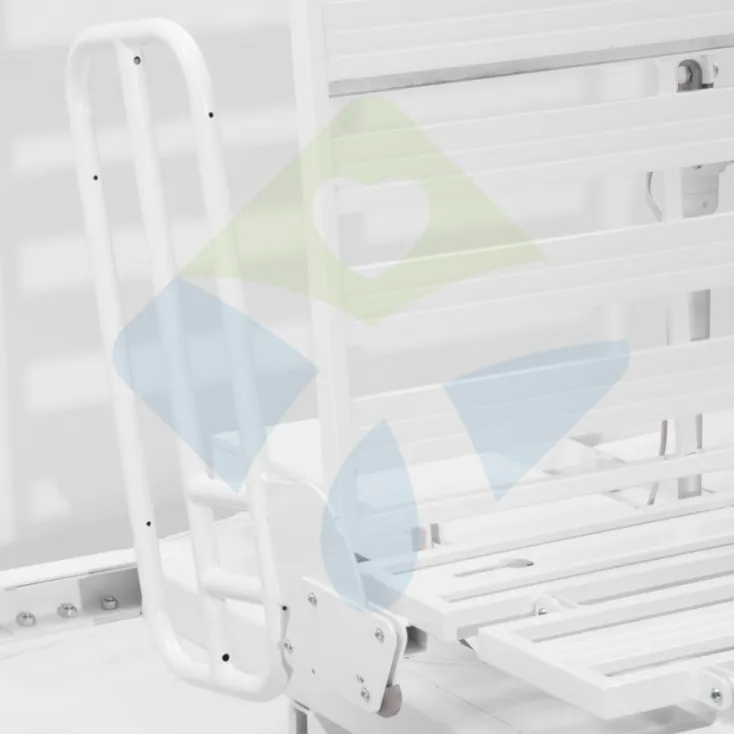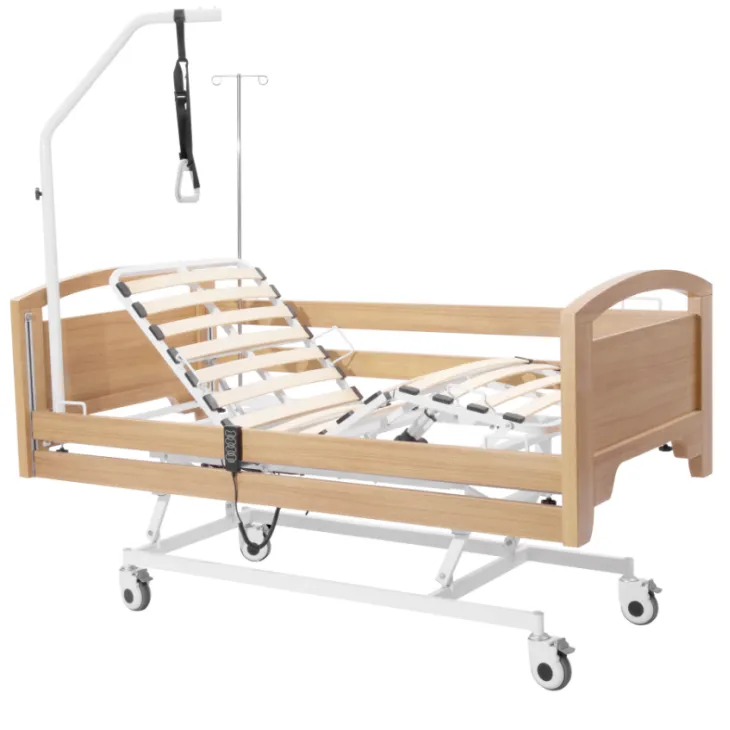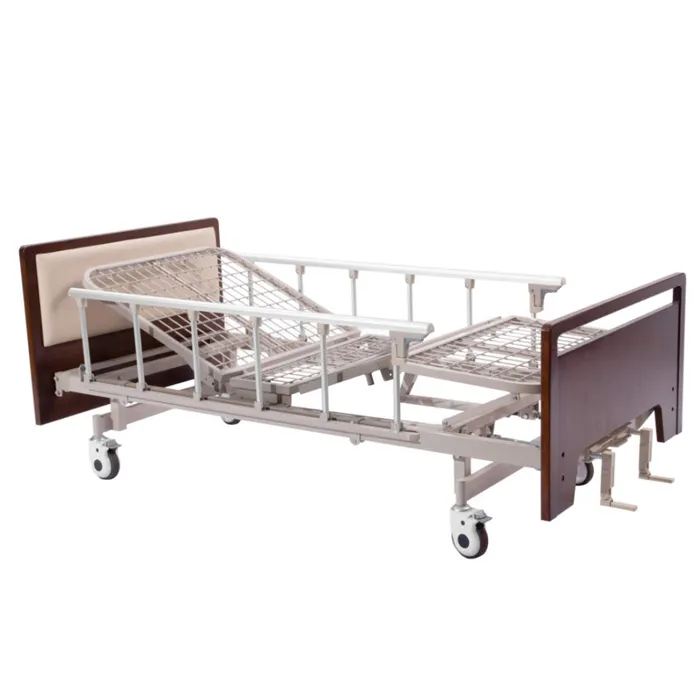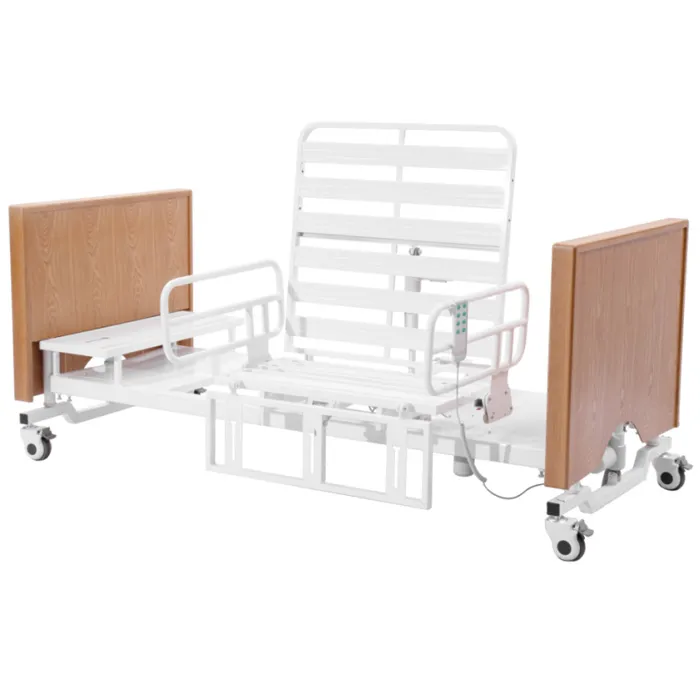In modern medical and home care environments, nursing care beds have become an indispensable and important device. It is not only widely used in professional institutions such as hospitals, nursing homes, and rehabilitation centers, but has also gradually entered more and more families, providing necessary support and comfort for long-term bedridden patients, the elderly, or people with limited mobility.
This article will take "What is a nursing bed" as the theme, and comprehensively interpret the nursing bed from multiple aspects such as definition, classification, core structure, functional characteristics, application fields, and technical composition, aiming to provide readers with professional, detailed and logically rigorous understanding.

What is a nursing bed?
A nursing bed is a medical auxiliary device designed specifically for patients or people with limited mobility who need to stay in bed for a long time. The main function of a nursing bed is to assist patients in various body position changes in bed, while providing convenience for caregivers to reduce nursing intensity, improve nursing efficiency, and enhance patient comfort and safety.
Unlike ordinary beds, nursing care beds have multiple adjustable structures, such as back lift, leg lift, height adjustment, and side flipping functions. Through these designs, nursing care beds can meet the basic living needs of patients during bed rest, such as eating, reading, going to the toilet, changing dressings, cleaning, etc., and assist patients in rehabilitation training.
What are the classifications of nursing beds?
According to the different structures, uses and control methods, nursing care beds can be divided into the following main types:
1. Classification by operation method
● Manual nursing bed: Angle and height adjustment is performed by hand-cranked devices, which is suitable for environments with relatively simple nursing needs or limited budgets.
● Electric nursing bed: Driven by a motor, the lifting and angle adjustment of each part of the bed body is controlled by a remote control or bedside controller. It is easy to operate and suitable for home and institutional care.
● Semi-electric nursing bed: Combining manual and electric functions, some adjustments require manual operation, and some are completed by electric control. It is suitable for occasions where there is a trade-off between budget and function.
2. Classification by number of functions
● Single-function nursing bed: Usually has a back lift function to meet basic bed rest needs.
● Multifunctional nursing bed: can realize multiple adjustments such as back, legs, bed height, turning over, and movement, suitable for critically ill patients or people who are bedridden for a long time.
3. Classification by usage scenario
● Nursing bed for medical institutions: used in hospitals, rehabilitation centers and other places, emphasizing structural stability, durability and easy disinfection.
● Family nursing bed: suitable for home environment, focusing on convenient operation, comfort and aesthetics.
● Nursing bed for elderly: designed for the elderly, with anti-fall railings, slow lifting, safety locking and other functions.

What are the core structural components of nursing care bed?
A complete nursing bed usually includes the following core structures:
1. Bed frame structure
The bed frame of nursing care bed is generally made of high-strength steel, aluminum alloy or carbon steel, with strong load-bearing capacity and stability. The bed frame is the skeleton part of the entire nursing care bed, carrying the bed board, motor and other functional components.
2. Bed board system
The bed board is the part of the nursing bed that is in direct contact with the patient's body. Modern nursing beds use highly breathable ABS, plastic or steel bed boards, and sometimes have mattress ventilation holes to enhance breathability and reduce the risk of bedsores. Nursing care bed boards are usually divided into three or four sections, corresponding to the back, buttocks, thighs, calves and other parts.
3. Lifting and adjustment system
This is an important difference between a nursing bed and an ordinary bed. The lifting system is usually driven by a motor, and some manual nursing beds use a gear chain with a crank to operate. The adjustment system mainly includes:
● Back lifting function: used to assist patients to sit up.
● Leg lifting function: helps improve blood circulation and reduce lower limb edema.
● Height adjustment function: convenient for nursing staff to operate and reduce waist burden.
● Overall tilt function (Trendeleburg / Anti-Trendeleburg): suitable for specific treatment and nursing situations.
4. Guardrail system
Nursing beds are generally equipped with detachable or foldable guardrails, which are mainly used to prevent patients from slipping off the bed and ensure safety. The guardrails of high-end nursing care beds are also equipped with button controls, alarm systems or intelligent detection devices.
5. Bed wheels and brake systems
Universal wheels are generally installed at the bottom of the nursing care bed to facilitate the flexible movement of the bed in the room. The wheels are equipped with foot brakes, which can be locked when they need to be fixed in position to ensure that the nursing bed is stable during operation.

What are the functions of a nursing bed?
The versatility of a nursing bed is its most notable feature, and its main functions are as follows:
1. Multi-angle adjustment function
The nursing bed can adjust the angle of the back and legs according to the needs of the patient, so that the patient can achieve sitting and lying conversion, semi-lying, supine, leg-lifting and other postures on the nursing care bed. For patients who cannot move independently, this function can greatly improve the quality of life.
2. Assisted turning function
The multifunctional nursing care bed has a left and right side-turning design. Through electric or manual devices, the bed board is slightly tilted to assist patients in turning over regularly and prevent pressure sores.
3. Height adjustment
The nursing care bed can raise and lower the height of the entire bed, which is convenient for patients to get on and off the bed, and allows nursing staff to provide care according to the working height, reducing waist fatigue.
4. Convenient movement and braking
The universal wheel design of the nursing care bed is convenient for indoor movement or transfer of patients, improving nursing efficiency. With a strong braking system, the bed is stable during nursing operations.
5. Easy to clean and disinfect
The surface material and structure of the nursing bed are easy to clean and disinfect, especially in a medical environment. This feature is of great significance for preventing cross infection.
What are the application scenarios of nursing bed?
Due to its unique functional advantages, nursing bed is widely used in a variety of environments:
1. Hospital wards
In general wards, intensive care units, rehabilitation departments and other areas of hospitals at all levels, nursing bed is a basic configuration equipment. Its back lifting, side flipping, emergency tilting and other functions are helpful for doctors to treat and nurses to care.
2. Nursing institutions and retirement centers
For the elderly or those with limited mobility, nursing care beds can provide continuous bed support and humanized care, reduce the labor intensity of nursing staff, and improve the overall quality of care.
3. Home care
With the growing demand for home care, more and more families choose to configure nursing beds to better care for their long-term bedridden relatives or patients in recovery.

Professional evaluation indicators of nursing beds
To judge the professionalism and practicality of a nursing bed, we mainly look at the following technical and performance indicators:
● Load-bearing capacity: The standard nursing care bed has a load-bearing range of 120kg to 250kg, and should be selected according to the patient's weight.
● Adjustment angle range: The back of the nursing care bed can usually be raised to about 75°, the leg can be raised to 40°, and the lifting height range is 30cm to 70cm.
● Material safety: The nursing care bed must use non-toxic, antibacterial, and corrosion-resistant materials to ensure long-term safety.
● Operational convenience: including remote control response speed, button design logic, motor noise control, etc.
● Maintenance convenience: simple structure, easy to replace parts, easy to maintain.
What types of hospital furniture and rehabilitation equipment do you offer?
Yikang Medical offers a wide selection of hospital furniture and rehabilitation devices, including hospital beds, nursing care beds, wheelchairs, shower chairs, commode chairs, walking aids, crutches, and more. We manufacture and supply these products at wholesale prices, with options for customization to meet specific needs.
Whether you are purchasing for a medical facility or home care, our products come with discounts for bulk purchases and competitive pricing to offer the best value in the market.

